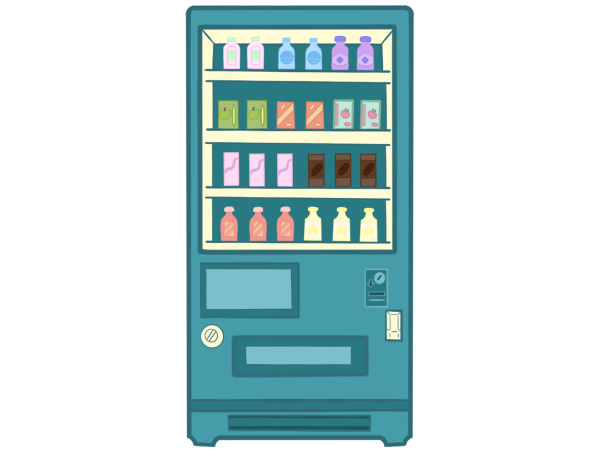The new advancement in the da vinci medical robot
October 10, 2019
The use of robotic surgery has allowed surgeons to perform complex and often high-risk procedures with improved precision, flexibility, and control. Before robotic surgery, the surgeons would do what is typically known as open surgery, which is when the surgeon cuts large invasive holes to operate.
The use of robotic surgery speeds up the recovery time for those who go underneath the microscopic needle. One of the hopes, when the Intuitive Surgical Systems were developing this new technology, is that the robot would decrease wartime mortality by eliminating the transportation time of wounded soldiers in need of surgery.
When the Intuitive Surgical Systems presented this new technology that would save lives, the U.S. Army provided Surgical Systems funding to have them devise a system that could be used and operated remotely and safely in a war zone for soldiers who are in dire need of treatment.
Although the devised system was tested on animal models and could be judged for subjecting animals to multiple surgical testing, the animals were not in vain. Although the Army never proceeded to use the surgical robot on the battlefield.
After a redesign to fit a more advanced hospital setting and being adjusted to fit the Health Insurance Portability and Accountability Act, and regulations, this system was reintroduced as the da Vinci Surgical System by Intuitive Surgical Systems.
This minimally invasive microscopic robotic surgical system was approved by the FDA in 2000 and is currently the only robotic surgical system used in the U.S. The system reduces the surgeon’s time spent on reaching difficult areas of the body, thereby reducing the surgeon’s fatigue, thereby letting the surgeon do more operations per day, thereby having fewer people on a waiting list.
The da Vinci also reduces the surgical team to only three people — the surgeon, who operates the machine scrub tech assist who changes out the part that is needed at any given time, and resident aka the student who will be a future operator of the da Vinci. With a smaller staff, there is a lower chance of miscommunication in the operating room.
The vast majority of cancerous tumor surgeries in the United States are done with the aid of the da Vinci system making the tool extremely crucial to the survival of those who have a high-risk tumor.
The most impressive application of the da Vinci system is endoscopic coronary grafting, which is a severe and difficult procedure that deals with the inside of the coronary vessel and its lining.
The endoscopic coronary grafting procedure was previously not achievable through any laparoscopic means and often time people in need of endoscopic coronary grafting would die or have a heart attack leaving in so much pain that they would have a lackluster for life.
In Loulmet D et al. paper on Endoscopic coronary artery bypass grafting with the aid of robotic-assisted instruments, he writes about the endoscopic coronary bypass surgery with the robot tool is very helpful and how within six months the two patients were completely recovered and showed no signs of having any previous issues.
The study shows the da Vinci System has a favorable short-term outcome by successfully constructing left internal thoracic artery to left anterior descending artery anastomoses.
Another use of the robotic surgical system is in pediatric laparoscopic surgery, the kind of surgical procedures that are performed in newborn babies.
Pediatric laparoscopic surgery is heavily limited by the factor that usually, the baby is too small, like an A Neonatal Intensive Care Unit (NICU) baby, and surgery could kill or damage the baby more than benefit. Without the robot, the operation could not have been done to the precision of 2 to 15 mm. But this can be easily accomplished through the use of the da Vinci system with the 8mm needles.
Although despite robotic surgeries, many advantages compared to laparoscopic surgery, the da Vinci system still poses some dangerous and potentially life-ending limitations. Robotic surgery is quite a recent invention, especially for public use, and all the risk factors are not yet known or been able observed in tests.
The main and biggest disadvantage to the da Vinci system is simply the cost and accessibility of the machine. The da Vinci system costs around 2 million dollars, which greatly reduces its availability and use, especially in rural and lower-income areas where there is less funding and the HCA, Health Care of America, the nation’s leading provider of healthcare services, or other bodies deem there not to be a need to fund such a cost. Also, the machine itself is vast, requiring operating rooms to be made or greatly adjusted to accommodate for the machine.
Surprisingly because of how gaming consoles are made and played, where the game requires the player to look up at the tv while still using their hands to play the game, upcoming generations are predicted to be the generation of robot surgeons and not need to develop that skill later on since they have used the skill since they were kids. Apart from the cost and training, it would take to have the technology implemented into every hospital, there are also technological problems, such as latency, the time between when the physician moves the controls for the operation, and when the robot responds and does say movement.
Another concern is the inability to change course during surgery. Even though the robot is constantly being updated and fixed, the split-second reaction times needed can sometimes be the difference between life and death.
Another thing, as the surgeon gets older, they tend to become even more slow to react to errors, so the reaction time and the latency combined could risk the patient life. Also, there is still a chance for human error if the physician incorrectly programs the robot before surgery. Computer programs cannot change course during surgery once they are set, which limits the physician’s options if something goes wrong and there is a need to change the charting when done with a robot a human surgeon can make needed adjustments to accommodate the needs of the new charting.
There are also potential cybersecurity risks such as hacking and malware issues that easily can make a surgery fail. If someone chooses to, they could hack the system as an assassination attempt making the operation on someone like a president or high ranking officer nearly impossible to do until the robot system could be tamper-free.
The need to adopt and continually update treatment protocols to reduce errors is crucial to improve patient care, especially as the future of medicine is heavily wrapped in robots.
Though the robotic surgical system has already been proven to be extremely beneficial, it can still be greatly improved by increasing the security and developing faster mechanisms that surgeons can use in case an operation needs to be recharged.
The changes and further training could help make the da Vinci technology an everyday tool that could be integrated and essentially mainstreamed for surgical help. Helping people live longer, recover faster, and have more successful operations.









